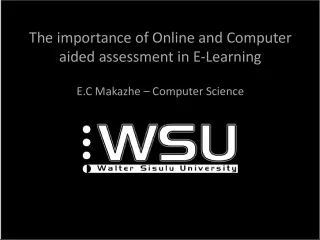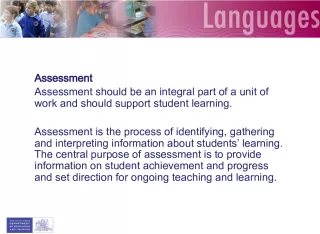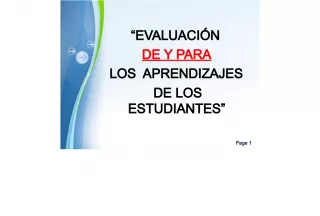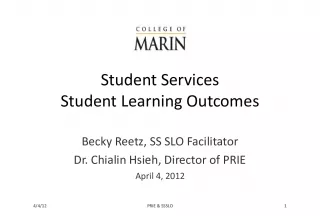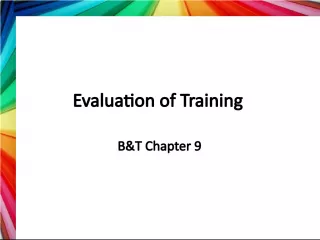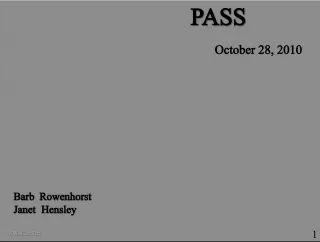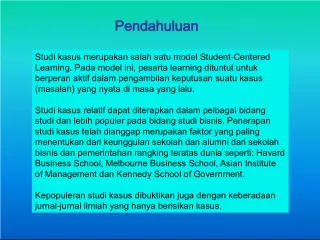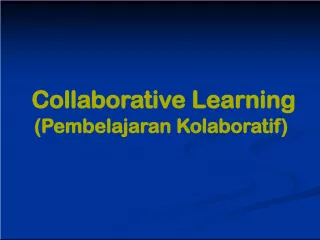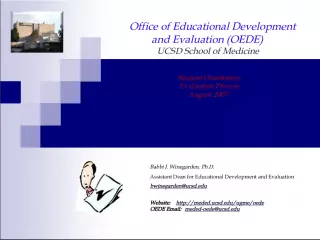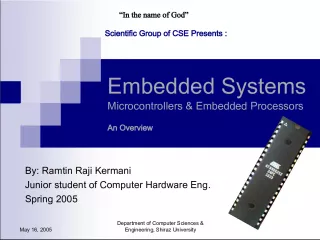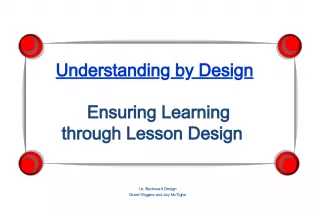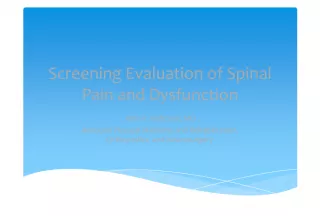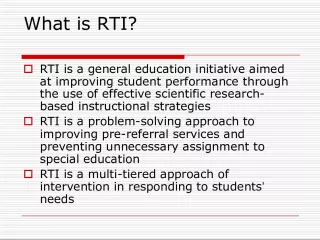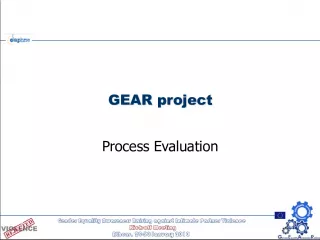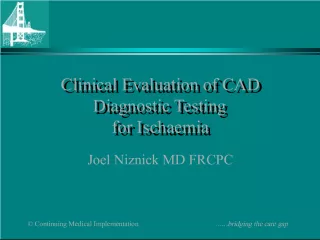Utilizing Embedded Assessment for Effective Student Learning Evaluation
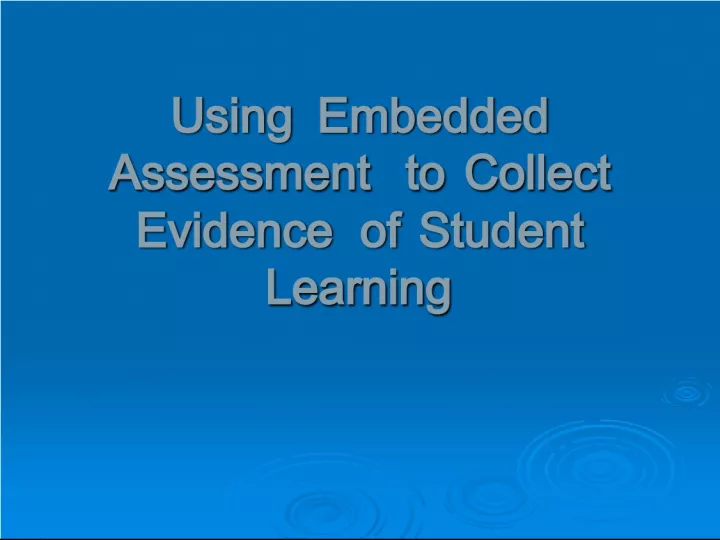

This presentation provides an overview of embedded assessment, its advantages and disadvantages, and various methods of embedding assessment tools within a course. It also emphasizes the importance of thoughtful design and implementation of embedded assessments for effective evaluation of student learning.
- Uploaded on | 1 Views
-
 albapastor
albapastor
About Utilizing Embedded Assessment for Effective Student Learning Evaluation
PowerPoint presentation about 'Utilizing Embedded Assessment for Effective Student Learning Evaluation'. This presentation describes the topic on This presentation provides an overview of embedded assessment, its advantages and disadvantages, and various methods of embedding assessment tools within a course. It also emphasizes the importance of thoughtful design and implementation of embedded assessments for effective evaluation of student learning.. The key topics included in this slideshow are Embedded assessment, student learning, evaluation, advantages, disadvantages, course design,. Download this presentation absolutely free.
Presentation Transcript
1. Using Embedded Assessment to Collect Evidence of Student Learning Using Embedded Assessment to Collect Evidence of Student Learning
2. Presentation Overview Presentation Overview What is Embedded Assessment? What is Embedded Assessment? Advantages of Embedded Assessment Advantages of Embedded Assessment Disadvantages of Embedded Assessment Disadvantages of Embedded Assessment Types of Course-Embedded Assessment Types of Course-Embedded Assessment Process of Embedding Assessment Process of Embedding Assessment Creating and Designing Course- Embedded Assessments Creating and Designing Course- Embedded Assessments
3. What is Embedded Assessment? What is Embedded Assessment? Take place in a class or a group of classes Take place in a class or a group of classes Determines whether students are learning pre-established learning outcomes Determines whether students are learning pre-established learning outcomes Take advantage of pre-existing student motivation to perform well Take advantage of pre-existing student motivation to perform well Assess what is actually taught Assess what is actually taught
4. Advantages of Embedded Assessment Advantages of Embedded Assessment Student motivation is high because the assessment activity is part of a course activity Student motivation is high because the assessment activity is part of a course activity Costs are reduced because incentives are unnecessary Costs are reduced because incentives are unnecessary It usually does not require additional student time as it is part of the curriculum It usually does not require additional student time as it is part of the curriculum It is faculty-driven and thus, more likely, to be used for improvement It is faculty-driven and thus, more likely, to be used for improvement Because its linked to the curriculum, its more likely to identify specific curricular needs/deficiencies Because its linked to the curriculum, its more likely to identify specific curricular needs/deficiencies Feedback to faculty is usually quick Feedback to faculty is usually quick
5. Disadvantages of Embedded Assessment Disadvantages of Embedded Assessment Faculty commitment is absolutely essential, but can be hard to get Faculty commitment is absolutely essential, but can be hard to get Faculty resistance to the process may be substantial Faculty resistance to the process may be substantial Achieving agreement among faculty on an assessment approach across courses is a challenge Achieving agreement among faculty on an assessment approach across courses is a challenge Usually there are no comparable data Usually there are no comparable data
6. Types of Course-Embedded Assessment Types of Course-Embedded Assessment Exams Exams Quizzes Quizzes Research Papers Research Papers Projects Projects Field Experiences Field Experiences Lab Reports Lab Reports Internships Internships Pre/Post Comparisons Pre/Post Comparisons Student Portfolios Student Portfolios Capstone Evaluations Capstone Evaluations
7. Process of Embedding Assessment Process of Embedding Assessment All faculty involved must identify specific learning goals for course(s) All faculty involved must identify specific learning goals for course(s) The goals should be succinct and central to the overall objectives of the course The goals should be succinct and central to the overall objectives of the course For multiple sections, all faculty must agree to the goals and commit to teaching to the goals For multiple sections, all faculty must agree to the goals and commit to teaching to the goals Assessment methods must be agreed upon, including when and what will be used, e.g. pre/post, final exam, etc. Rubrics, exam questions, prompts, etc. Assessment methods must be agreed upon, including when and what will be used, e.g. pre/post, final exam, etc. Rubrics, exam questions, prompts, etc. Standards must be agreed upon Standards must be agreed upon Results must be analyzed and then interpreted Results must be analyzed and then interpreted Information must be shared with all relevant faculty Information must be shared with all relevant faculty Where appropriate, the course should be improved or the assessment technique modified Where appropriate, the course should be improved or the assessment technique modified
8. Creating and Designing Course-Embedded Assessments Creating and Designing Course-Embedded Assessments Select the course SLO to be assessed; or s elect some aspect of that existing assignment that aligns with the course SLO Select the course SLO to be assessed; or s elect some aspect of that existing assignment that aligns with the course SLO Evaluate and review course assignments which could be used for assessment; Evaluate and review course assignments which could be used for assessment; Decide which course elements would best serve as assessment tools and which elements will need to be modified to be modified to meet the needs of assessing course objectives; Decide which course elements would best serve as assessment tools and which elements will need to be modified to be modified to meet the needs of assessing course objectives; Integrate the embedded assessments elements into the course; Integrate the embedded assessments elements into the course;
9. Creating and Designing Course-Embedded Assessments Creating and Designing Course-Embedded Assessments Collect the results of the assessment tools; Analyze that aspect, across all students, to see how successfully achieved it was by all students. Collect the results of the assessment tools; Analyze that aspect, across all students, to see how successfully achieved it was by all students. Determine the level of student achievement as a result of the assessment tools and evaluate the achievement of course SLO; Determine the level of student achievement as a result of the assessment tools and evaluate the achievement of course SLO; Make appropriate changes to the course content or curriculum if this is indicated by the assessment results. Make appropriate changes to the course content or curriculum if this is indicated by the assessment results. Using the example below, lets say you wanted to analyze punctuation across the entire class; you would see that punctuation fared pretty wellwhile spelling seemed to miss the mark. Using the example below, lets say you wanted to analyze punctuation across the entire class; you would see that punctuation fared pretty wellwhile spelling seemed to miss the mark. You can make this process as straightforward, or as rigorous as you want! You can make this process as straightforward, or as rigorous as you want!
10. SLOs Assessment vs. Grades SLOs Assessment vs. Grades Identified Learning Outcomes Identified Learning Outcomes Student 1 Student 1 Student 2 Student 2 Student 3 Student 3 Student 4 Student 4 Student 5 Student 5 Learning Learning Outcome Outcome Average Average Spelling Spelling 3 3 4 4 1 1 2 2 3 3 2.6 2.6 Grammar Grammar 2 2 5 5 3 3 2 2 5 5 3.4 3.4 Punctuation Punctuation 4 4 5 5 2 2 3 3 4 4 3.6 3.6 Structure Structure 4 4 3 3 4 4 5 5 3 3 3.8 3.8 TOTAL TOTAL 13 13 17 17 10 10 12 12 15 15 Individual Student Grade: Individual Student Grade: C C A A D D C C B B Assessment isnt the same as assigning grades. Grading standards might be vague, while assessment information is very specific. Grades do not provide: Specific information about students performance on discrete tasks Meaningful data across sections Objective student data which can be used for improvement of student learning or recognition of student achievement Grades alone do not give enough information on specific strengths and weaknesses of students.
11. Considerations for Using Embedded Assessment Considerations for Using Embedded Assessment Political considerations if selecting samples, e.g. Why me or my class? Political considerations if selecting samples, e.g. Why me or my class? Incentives for faculty to be involved? Incentives for faculty to be involved? Incentives for students? Incentives for students? Course-embedded assessment can be labor intensive Course-embedded assessment can be labor intensive It is the most likely to produce real improvement in the classroom. It is the most likely to produce real improvement in the classroom.
12. Lets go and Embedded Some Assessment Lets go and Embedded Some Assessment
